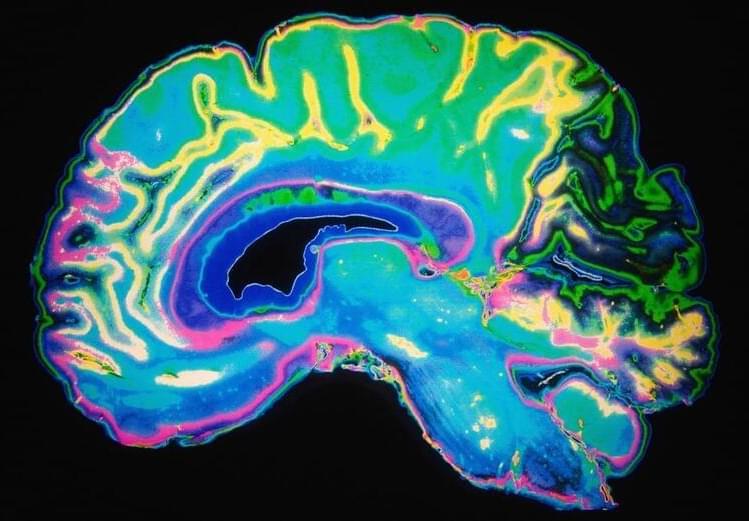Year 2021 face_with_colon_three
For decades, scientists suspected that bacteria known as Geobacter could clean up radioactive uranium waste, but it wasn’t clear how the microbes did it.
Year 2021 face_with_colon_three
For decades, scientists suspected that bacteria known as Geobacter could clean up radioactive uranium waste, but it wasn’t clear how the microbes did it.


Prasang Chandorkar was excited about turning a new leaf in his life after meeting Wachika on a matrimonial website. They soon got engaged and started planning their life ahead.
But little did they know what was in store for them. Soon after the engagement, in November 2021, Prasang was diagnosed with cancer. This brought his life to a standstill.

Professors Miguel Ángel Herrada of the University of Seville and Jens G. Eggers of the University of Bristol have uncovered a mechanism that explains the erratic movement of bubbles rising in water. The findings, published in the prestigious journal Proceedings of the National Academy of Sciences, could provide insights into the behavior of particles that fall between solid and gas states.
Leonardo da Vinci observed five centuries ago that air bubbles, if big enough, periodically deviate in a zigzag or spiral from a straight-line movement. However, no quantitative description of the phenomenon or physical mechanism to explain this periodic motion had ever been found.

Microsoft co-founder Bill Gates knows a thing or two about paradigm shifts, having played a key role in personal computers becoming a thing. Today, he believes, an equally important development is beginning with ChatGPT and similar artificial intelligence tools.
“A.I. is going to be debated as the hottest topic of 2023. And you know what? That’s appropriate. This is every bit as important as the PC, as the internet,” Gates recently told Forbes, adding that he now spends about 10% of his time talking with Microsoft teams about their product road maps, despite having been long retired and focused on philanthropy.
ChatGPT, of course, is the A.I. chatbot that’s been making waves with its ability to respond to typed questions with eerily human-like responses. Launched a few months ago, ChatGPT now attracts more than 100 million monthly active users, according to a research note published Wednesday by UBS. It easily reached 100 million faster than TikTok or Instagram, the bank’s analysts noted, adding, “In 20 years following the internet space, we cannot recall a faster ramp in a consumer internet app.”

Support us! https://www.patreon.com/mlst.
MLST Discord: https://discord.gg/aNPkGUQtc5
Pod (music removed) https://anchor.fm/machinelearningstreettalk/episodes/NO-MUSI…on-e1udbq2
Pod (with music) https://anchor.fm/machinelearningstreettalk/episodes/NO-MUSI…on-e1udbq2
10 minute edit version: https://www.linkedin.com/feed/update/urn: li: activity:7027230550163644416/
We are living in an age of rapid technological advancement, and with this growth comes a digital divide. Professor Luciano Floridi of the Oxford Internet Institute / Oxford University believes that this divide not only affects our understanding of the implications of this new age, but also the organization of a fair society.
The Information Revolution has been transforming the global economy, with the majority of global GDP now relying on intangible goods, such as information-related services. This in turn has led to the generation of immense amounts of data, more than humanity has ever seen in its history. With 95% of this data being generated by the current generation, Professor Floridi believes that we are becoming overwhelmed by this data, and that our agency as humans is being eroded as a result.
According to Professor Floridi, the digital divide has caused a lack of balance between technological growth and our understanding of this growth. He believes that the infosphere is becoming polluted and the manifold of the infosphere is increasingly determined by technology and AI. Identifying, anticipating and resolving these problems has become essential, and Professor Floridi has dedicated his research to the Philosophy of Information, Philosophy of Technology and Digital Ethics.
We must equip ourselves with a viable philosophy of information to help us better understand and address the risks of this new information age. Professor Floridi is leading the charge, and his research on Digital Ethics, the Philosophy of Information and the Philosophy of Technology is helping us to better anticipate, identify and resolve problems caused by the digital divide.
TOC:
Watch as Baidu, the leading Chinese tech giant, takes on the world-renowned AI model ChatGPT in this exciting showcase of cutting-edge technology. Discover how China is establishing itself as a major player in the global AI arms race and learn about the advancements Baidu is making in the field.
🔔 Did you enjoy the content? Subscribe here:
- https://rb.gy/nekyhx.
🎥 Want to watch more? Find videos here:
- https://rb.gy/l03r32
⚠️ Copyright Disclaimers.
• Section 107 of the U.S. Copyright Act states: “Notwithstanding the provisions of sections 106 and 106A, the fair use of a copyrighted work, including such use by reproduction in copies or phonorecords or by any other means specified by that section, for purposes such as criticism, comment, news reporting, teaching (including multiple copies for classroom use), scholarship, or research, is not an infringement of copyright.”
• We use images and content in accordance with the YouTube Fair Use copyright guidelines.

